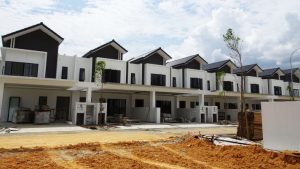Top 10 Issues Affecting the Real Estate Industry

[mashshare]
Hello, people. Welcome to the CORE College of Real Estate Youtube channel. Though real estate agents and developers often face the same problems, it’s important to find solutions to these problems in any way necessary. This is not what matters because hard-working people can always find a solution to obstacles like these. This video is going to list out some of the major real estate problems faced by agents, developers, and investors, then explain how these problems can be solved. If you want more real estate content, CORE Member, subscribe to the CORE College of Real Estate Youtube channel, and hit the notification bell.
- COVID-19
 The COVID-19 virus will teach us all about priorities, resilience, and demand. The 2020-21 Top Ten Issues are an attempt to overlay this new world onto an already changing real estate environment. As we examine real estate markets, it’s important to consider how vulnerable the market is, how well it can adapt to new demands, and how relevant it still is to people in different markets. Demand will be defined by the extent that this crisis leads people to abandon old habits and adopt new ones. The duration of the lockdown has been a factor, as is the confidence with which we emerge. Key questions without answers include: Will we be willing to shop in crowds, sit in theaters, and live close together as much as we did before?
The COVID-19 virus will teach us all about priorities, resilience, and demand. The 2020-21 Top Ten Issues are an attempt to overlay this new world onto an already changing real estate environment. As we examine real estate markets, it’s important to consider how vulnerable the market is, how well it can adapt to new demands, and how relevant it still is to people in different markets. Demand will be defined by the extent that this crisis leads people to abandon old habits and adopt new ones. The duration of the lockdown has been a factor, as is the confidence with which we emerge. Key questions without answers include: Will we be willing to shop in crowds, sit in theaters, and live close together as much as we did before?
In regards to the pandemic, it can be assumed that there will be a reduction in demand for real estate, but increased demand from people wanting to stay at home. In order to lower the density of airplanes, restaurants, and other areas people like to go to, there would need to be higher costs overall. The real estate industry is a lagging indicator. The economy is expected to take at least a few years to recover from the effects of COVID-19, so the industry will show ripples for a while longer.
- Economic Renewal
The US economy was headed towards a tipping point prior to the COVID-19 pandemic, and there are many challenges that persist beyond this event. These include rampant issues with the economy and poor publicity for real estate. There are a number of indications that the U.S. went from 3 million jobs to 2 million, from a peak in industrial production to negative territory, and from higher birth rates to less than 8%. Economic growth has been slow, and one sector of the economy that will continue to grow in healthcare. Healthcare is an important source of job creation for people who have a low income. For the decade of the 2020s, the economy is constrained by long-run potential GDP growth that is a weak 1.5 – 1.6 percent.
- Capital Market Risk
 Debt and equity capital can stop flowing when risk and return are difficult to measure. In the face of stunted inflation, risk premium spreads and underwriting assumptions are critical to understanding. One important metric to consider is the percentage of rent being paid in each sector, where late debt service payments are also important. The federal intervention helped to support the stock market, but without a return to traditional lending and payments, there is continued concern about larger-scale losses.
Debt and equity capital can stop flowing when risk and return are difficult to measure. In the face of stunted inflation, risk premium spreads and underwriting assumptions are critical to understanding. One important metric to consider is the percentage of rent being paid in each sector, where late debt service payments are also important. The federal intervention helped to support the stock market, but without a return to traditional lending and payments, there is continued concern about larger-scale losses.
Mortgage REITs took a significant hit early in the pandemic, even when there were no losses in collateral due to defaults. This is also true with share price rallies. The commercial mortgage REIT sector is down more than 36% YTD, with some down more than 50%. The real estate market will be re-priced after public stocks have recovered. Changes in COVID-19 will impact the real estate market and will eventually impact capital costs. Things to watch out for that are not COVID-related, but worth consideration, are the 2020 presidential election, the switch to SOFR as an index, and reporting regulations that will put investor focus on these. These changes will happen, and it is hard to predict what the outcome of those changes might be.
- Public & Private Indebtedness
All real estate is different in terms of values and demand. The local area has a big effect on these aspects, as it influences the indebtedness and taxes available. Translating public debt and fiscal and monetary policies to the context of a location will give an investor more insight into how they can impact commercial real estate. The national debt has increased over a 6-month period and is approaching the median home price in the U.S. This is leading to less spending and less investment, slowing economic growth.
There is $10 billion in debt in total, with $6,350 of that burden being borne by every individual and business taxpayer. The $1.7 trillion student debt is a lot more than the $1.0 trillion in credit card debt and is the largest burden on millennials that have been in the workforce for years now. In 2016, Gallup reported that 47% of millennials said their student loans are causing them to put off their plans to buy a home or make other major expenditures. Total debt in the United States is now almost as high as the annual GDP. This much debt combined with COVID-19 happening at this time will create many problems, such as higher interest rates and worse commercial real estate.
- Affordable Housing
 With the high demand for affordable housing, there are two things that most can agree on – 1) that it is difficult to find affordable housing, and 2)either a ‘Not in My Back Yard’ or NIMBY agenda. There is a shortage of 7.2 million homes for people with very low incomes, and this situation is made worse by the lack of affordable for-sale property, which pushes up prices. The Urban Institute found that before the COVID-19 epidemic, housing affordability was the most pressing problem facing America. Home prices in the bottom 20th percentile increased 126% between January 2000 and December 2019. This was substantially more than the 87% increase for homes in the top 20th percentile.
With the high demand for affordable housing, there are two things that most can agree on – 1) that it is difficult to find affordable housing, and 2)either a ‘Not in My Back Yard’ or NIMBY agenda. There is a shortage of 7.2 million homes for people with very low incomes, and this situation is made worse by the lack of affordable for-sale property, which pushes up prices. The Urban Institute found that before the COVID-19 epidemic, housing affordability was the most pressing problem facing America. Home prices in the bottom 20th percentile increased 126% between January 2000 and December 2019. This was substantially more than the 87% increase for homes in the top 20th percentile.
- Flow of People
International immigration has always been a critical driver of real estate and the economy. Today, our world faces unprecedented challenges to mobility. Immigration has ground to a halt, initially driven by nationalistic policies in the US and other countries, but more recently by the COVID-19 pandemic. Real estate prices in communities with a history of relying on migration and COVID-19 changes are about to decrease, as people will be willing to settle for less income.
40% of urbanites are considering fleeing the city because of the economic effects due to the virus. They can only leave if they have high salaries or remote employment. Google is working towards less reliance on public transportation. This will determine how far this dynamic progresses. People living in countries with the virus have been moving away to find better jobs, which improves their productivity, and drives the real estate markets. Real estate implications will be determined by how long behavioral changes brought on by the virus last, the quality of innovations in healthcare, living and working that emerge, and the quality of world leadership.
- Space Utilization
 COVID-19 stresses the use, location, and interior configuration of commercial buildings. Safety issues were at the forefront after 9-11, but there is now a focus on the health of building occupants. There are likely to be new expectations for urban planning, which would include more considerations of specific elements of the city. The built environment is designed to facilitate society during a lockdown, with urban structures that integrate offices and residential spaces. All types of businesses are encouraged in these communities. Many classic retail formats and retailers will never regain the market share they once had, but may require creative reuse or development to take their places in the future.
COVID-19 stresses the use, location, and interior configuration of commercial buildings. Safety issues were at the forefront after 9-11, but there is now a focus on the health of building occupants. There are likely to be new expectations for urban planning, which would include more considerations of specific elements of the city. The built environment is designed to facilitate society during a lockdown, with urban structures that integrate offices and residential spaces. All types of businesses are encouraged in these communities. Many classic retail formats and retailers will never regain the market share they once had, but may require creative reuse or development to take their places in the future.
- Technology & Workflow
Amidst a pandemic, the need for risk management is urgent. In order to stay safe, the migration back to the office, combined with reconfiguration and change in operating methods, is starting to accelerate the adoption of technology in the built environment. The many technologies of the future will go from “nice to have” to “mandatory.” Technologies like people in buildings, contactless doors, air, and water quality monitoring, airflow and recirculation control, and health screenings for contractors and facility staff will be the norm. Necessity will move us to better and smarter buildings. Businesses will adopt web meetings, safety standards, and privacy tools to become more efficient. They’ll be safer and better prepared for the next big surprise.
- Infrastructure
Infrastructure is an important issue for the real estate industry because it affects both man-made and natural environments. Infrastructure is central to sustainability and quality of life, so we need to view it through a different lens in light of current events. The infrastructure crisis has occurred because of billions in cutbacks to basic infrastructure needs, by neglecting things such as water sanitation, safe drinking water, roads, and mass transportation. This issue becomes worse with the ASCE’s ranking of U.S. infrastructure being a dismal D+. For example, complicating the global crisis are the pandemic, extreme weather, cyber attacks, and terrorism. Adaptable infrastructure is needed to combat these major disruptors. With more people using the internet to shop, there’s a higher demand for warehouses with more storage and distribution.
- ESG
 The importance of ESG issues is becoming a greater part of investing in real estate. These are trends that are already in place and have been for much longer, but COVID-19 has been a wake-up call. Our acceptance of climate change risks, innovations in tracking ESG performance, new investment alternatives that pay off, the growing influence on millennials, and recognition by corporations all contribute to the new “norm” when it comes to ESG matters. For property investment, it is important to look at the views of investors, clients, and tenants. There is not just one perspective when determining the best course of action. Equity, sustainability, health and wellness, and diversity should be considered as well. Walkable urban areas have successfully captured wealthier and younger people who are attracted to work access, public transit, entertainment, and restaurants. These city spaces account for virtually all new office and rental multifamily construction. It is important for investors and operators to start using ESG strategies in order to gain long-term value, especially in spite of the short-term losses.
The importance of ESG issues is becoming a greater part of investing in real estate. These are trends that are already in place and have been for much longer, but COVID-19 has been a wake-up call. Our acceptance of climate change risks, innovations in tracking ESG performance, new investment alternatives that pay off, the growing influence on millennials, and recognition by corporations all contribute to the new “norm” when it comes to ESG matters. For property investment, it is important to look at the views of investors, clients, and tenants. There is not just one perspective when determining the best course of action. Equity, sustainability, health and wellness, and diversity should be considered as well. Walkable urban areas have successfully captured wealthier and younger people who are attracted to work access, public transit, entertainment, and restaurants. These city spaces account for virtually all new office and rental multifamily construction. It is important for investors and operators to start using ESG strategies in order to gain long-term value, especially in spite of the short-term losses.
- Choosing the Wrong Site
A developer needs to find an appropriate location to build a successful project, which we call a site. It’s easy to lose potential clients if you don’t find the right and targeted market when building your real estate project. Developers need to find the best location and the best opportunity when creating a real estate project.
- When Sellers are Emotional
It’s common for sellers to be emotional when selling their homes. There are a number of emotions that can arise with this process, especially anxiety, nervousness, excitement, and worry. An emotional seller may also drag out the selling process. Talking to homeowners about the home selling benefits is imperative for successful sales. However, it all depends on the reason for selling the property. If you advise them to, the person could sell it or not.
- When Home Buyers are Unrealistic
When making a home sale, you will often come across an unreasonable buyer who is not actually looking to purchase a property, but instead wants you to show them the home. These buyers will waste your time, then never buy anything after wasting your time and showing them the property. Unreasonable customers will ask for a lower price and think they know the perfect things that need to be done in a home. They often make unreasonable requests about the home, like wanting furniture included in the sale or questioning the real value of the house. To achieve the goals of selling quality real estate products, you’ll need to be informed of the current state of the economy and a number of other factors. You should have your mind set on disappointment when it comes to real estate.

- When Neighborhood Reputation is a Deal Breaker
You may come across a customer who has found the perfect property, but not in their desired location and area. This is a problem that we can’t do anything about on our own, but there’s an answer to it. As a solution, generate information that provides information on specific locations in the area to find similar homes or reasons why a client should choose the same neighborhood.
- Lack of Affordable Housing
When the economic crisis occurred, most people couldn’t afford houses because prices were high. Consider the poor and rich when you price a home.
- Job Site Risks
In order to create a safe work site, the risks must be identified and assessed, and appropriate safety measures must be taken. Construction workers are at high risk for injury. Impairments include back and neck injuries, cuts, strains, joint pain, and hearing loss. As a good real estate developer, you should learn how to manage risk and avoid it at all costs if possible.
- Cost Overruns
With cost overruns and unanticipated expenses, real estate development can quickly deplete earnings. Developers must estimate the cost of their project and should provide a 10%-20% buffer for unforeseen costs. A common way to compensate for potential delays is to add 10% -15% more than you think the project will last.
- Technology Acceleration and Innovation
Technology is rapidly changing in the real estate industry, which can be a very big problem. This can mean people no longer need an agent, developer, or investor. Is technology now rendering the need for humans superfluous? To solve this problem, you need to be ahead of technological development and provide services that a machine cannot provide.

- Misreading the Real Estate Market
Developers should develop projects that have a natural demand behind them. Developers assess a range of variables in order to get an accurate feel for the trade area.
- Aging Population
The population is overwhelmingly aging, and society needs to change with it. The aging population will broadly and dramatically affect the real estate market. Aging will most directly affect demand but will have scores of less direct impacts such as potential capital impacts as pensioners by the dozens of millions move from being net contributors to net users of capital. In other words, it will most directly affect the demand for real estate, but it will also affect other areas such as health care and retirement funding.
That’s it for this blog CORE Member, remember to subscribe to our channel and if you feel like we’ve delivered value please share this blog with ONE person. That’s right just one person as a token of your appreciation for the hard work we put into making content that educates and helps you on your mission of building your own fortune. Remember you can read blog after blog, but it isn’t until you actually take action that you’ll start to see results. See you soon!
[mashshare]





